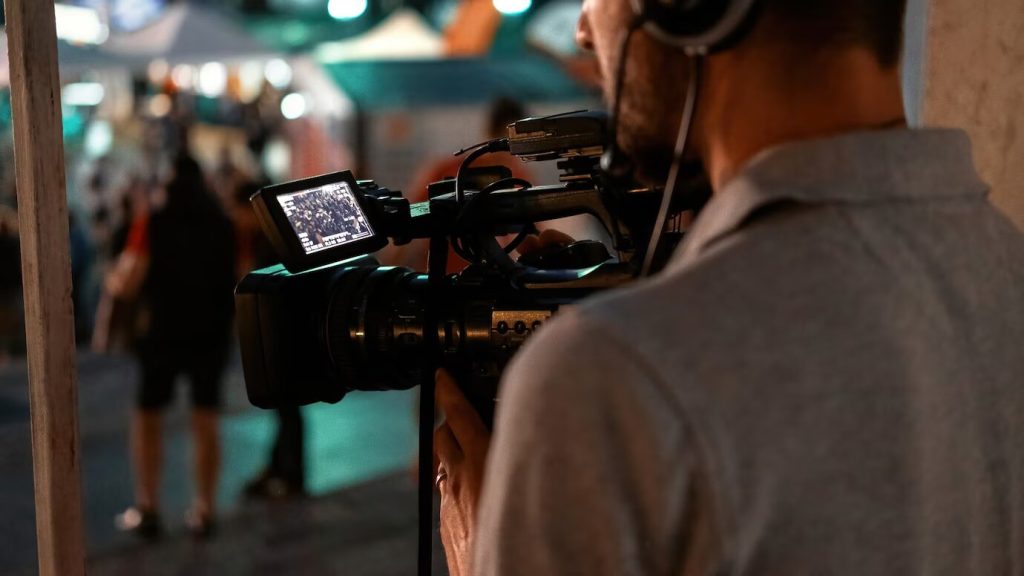TV commercials play an important part in marketing and advertising plans for businesses. These are an effective tool which enables brands to reach a broad audience effectively. TV commercial production involves a complex and precise process that requires careful planning and performance. From concept development to post-production. Each stage plays a vital role in producing a powerful and engaging advertisement. In this comprehensive guide, we’ll take you through each step of the TV commercial production process, providing valuable insights and tips to ensure your commercial captivates audiences and achieves your marketing goals.
TV Commercial Production Process:
Pre-Production Phase
1. Concept Development: The concept development phase represents the beginning of the creative process for a TV Commercial Production. In this stage, innovative teams and advertisers collaborate to produce innovative ideas and shape the direction of the commercial.
Understanding the target audience and the brand message is of utmost importance in developing the idea. Advertisers must possess a thorough understanding of who their target audience is. Furthermore, advertisers must align the concept with the brand’s message. This involves understanding the brand’s core beliefs, strategic positioning, and unique selling propositions. The idea should effectively communicate the brand’s personality and the intended perception in the consumers’ minds.
2. Script Writing: An effective commercial script must possess a clear objective that outlines the objectives of the commercial. It could be promoting a product, increasing brand visibility, or promoting an event. An effective commercial script provides a brief and compelling message. Emotions have a major impact while making a commercial memorable.
3. Storyboarding: Generating a visual representation of the commercial’s scenes is an essential step within the production process commonly called storyboarding. Storyboarding includes creating a series of sketches or images that show the key moments and actions for every scene. The main function of visual representations is to support and visualize the filmmaker’s vision. Moreover, visual aids assist convey the artistic concept to all members of the production crew.
4. Casting And Location Scouting: The production phase of a commercial involves bringing together all the necessary elements to create a compelling and effective advertisement. This phase includes tasks like casting and location scouting, which are crucial steps in ensuring the success of the commercial.
The production phase of a commercial involves combining all the essential components to make an engaging and successful advertisement. This step involves activities such as casting and location scouting.
Equipment
When it comes to developing a TV ad, there are several important equipment and crew members that are required to guarantee a successful production. Every team member fulfills a crucial role as part of the production process. They provide their knowledge to develop an efficient and visually appealing commercial.
List Of Equipment’s

1. Camera: A high-quality camera plays an important role in capturing clear pictures. Based on the needs of the commercial, different varieties of photographic devices may be used, such as cinema cameras or DSLRs.
2. Lighting Equipment: To establish the desired atmosphere and showcase the product or service being advertised, lighting equipment such as studio lights, reflectors, and diffusion panels are essential.
3. Sound Equipment: Clear and crisp audio is extremely important in a commercial for television. This consists of mics, boom poles, sound recorders, and headsets to record and monitor sound performance.
4. Grip Equipment: This consists of tripods, dollies, sliders, and additional equipment that supports stabilizing the camera and creating smooth movements.
5. Editing Software: Video editing software is necessary to combine all the media footage together, and incorporate visual effects, and sound.
Post-Production Phase:
The post-production phase of TV commercial production is a crucial step in bringing a well-crafted and polished advertisement to life. This phase involves various tasks and crew team that are essential to finalize the commercial’s overall look, feel, and message.
One of the primary tasks in the post-production phase is editing. This is where the raw footage is carefully reviewed and selected shots are pieced together to create a coherent and impactful story. Skilled editors use software and techniques to ensure seamless transitions, add visual effects, adjust color grading, and synchronize audio elements.
Tasks And Crew Team
1. Director: The director is responsible for leading the overall creative vision of the commercial. The team collaborates closely with the customer to grasp the objectives and convert them into impactful visuals. The director also guides the actors and ensures that the production stays on schedule.
2. Cinematographer: The cinematographer, commonly referred as the director of photography, is responsible for the filming and light placement. They collaborate closely with the director to achieve the desired look and feel of the commercial. The cinematographer is skilled in framing shots, composing scenes, and using lighting techniques to create a visually appealing commercial.
3. Production Assistant: Production assistants offer assistance to the crew working on the production. These individuals assist in performing a range of duties, including equipment setup, overseeing props, managing administrative documents, and guaranteeing a seamless production process.
4. Art Director: The creative director has the responsibility of the complete visual style of the commercial production. The team works in close collaboration with the filmmaker and visual designer to produce the preferred design aesthetics.
5. Sound Engineer: The sound engineer ensures top-notch sound recording. They additionally handle audio in the course of the production. The team works in close collaboration with the filmmaker and director of photography to collect sound which enhances the images.
6. Editor: The editor collects all the recorded clips and organizes it into a seamless and interesting commercial production. They include transitions, visual effects, background music, and noise to make the end result. Organizing timetables and overseeing operations throughout the production period is of great significance for a streamlined and productive production workflow.
The Bottom Line
Once all the elements are in place, quality control and final reviews are conducted to ensure that the commercial meets the client’s expectations and technical requirements. This involves making any necessary adjustments or revisions to address any last-minute changes or issues that may arise. The final deliverables are then prepared, which can include various formats and aspect ratios depending on the intended distribution platforms and channels. These can include broadcast television, streaming platforms, social media, or cinema. The post-production phase of TV commercial production allows for refining and enhancing the raw footage captured during the production phase. It brings together all the elements and expertise necessary to create a visually stunning and impactful commercial that effectively communicates the intended message to the target audience.
Hillside Kreative is a full-service commercial production company that can help you with every aspect of your TV commercial production, from concept to completion. We have a team of experienced professionals who are passionate about creating high-quality commercials that will reach your target audience and achieve your marketing goals.
Also Read: Budget-Friendly Music Video Production Tips for Independent Artists







